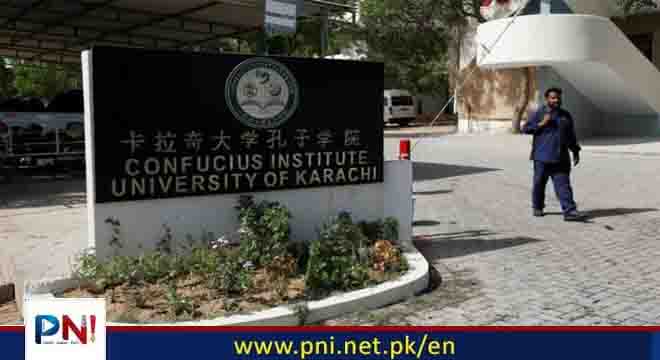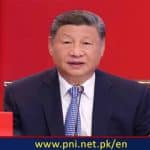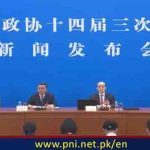ISLAMABAD, Aug 30 : China’s cultural diplomacy is more than just a strategic tool; it’s a revival of its historical influence aimed at reclaiming its global stature. As China transitioned from a century of struggle to a global powerhouse, cultural diplomacy emerged as a crucial aspect of its soft power strategy.
The establishment of the People’s Republic of China in 1949 marked the beginning of a focused effort on economic development and cultural outreach. Under President Xi Jinping, this strategy has been central to realizing the Chinese Dream of national rejuvenation, leveraging cultural initiatives to forge stronger international ties.
China’s economic transformation since the 1970s and 1980s has been nothing short of extraordinary. The World Economic Forum reports that economic output per capita surged by around 3,000%, earning China’s growth the label of a “miracle.”
Abdul Salam Khan, a professor at the Confucius Institute, National University of Modern Languages (NUML), Islamabad, discussing the role of China’s cultural diplomacy in its drive to global ambitions with APP said, “China has adeptly used cultural diplomacy to bolster its global influence. The establishment of Confucius Institutes in over 160 countries plays a pivotal role in spreading the Chinese language and culture, facilitating smoother business interactions, and fostering deeper cultural connections.
Cultural exchanges, including festivals and educational programs, further enhance China’s soft power, with over 400,000 international students benefiting from scholarships in China by 2021.”
China’s Belt and Road Initiative (BRI), launched in 2013, exemplifies its economic strategy, aiming to enhance trade and investment through infrastructure development across Asia, Europe, and Africa. Over 150 countries have signed BRI agreements, which, while focusing on infrastructure, also promote cultural exchange and cooperation.
With Chinese investments exceeding $1 trillion, countries like Pakistan are poised to gain significantly from this strategic partnership.
China’s global media presence, through outlets such as China Global Television Network (CGTN) and Xinhua, plays a crucial role in shaping international narratives, creating a favorable environment for Chinese businesses and fostering global harmony. Tourism also plays a significant role in China’s cultural diplomacy, with over 145 million tourists visiting in 2019, boosting local economies and expanding global networks.
The extensive network of sister city partnerships, numbering over 2,500 worldwide, further facilitates trade, investment, and economic collaboration. China’s growing influence in global cinema and art projects its culture and values on the world stage, generating revenue and promoting Chinese brands.
China’s success in cultural diplomacy has not gone unnoticed. Several countries have observed China’s approach and adopted similar strategies to enhance their own global influence. For instance, South Korea has leveraged its cultural export, known as the “Korean Wave” or Hallyu, to extend its soft power. Through global popularity of Korean pop culture, including music, films, and television dramas, South Korea has significantly increased its international presence and economic reach. The Korean Wave has not only bolstered South Korea’s cultural appeal but also fostered favorable trade relationships and international partnerships.
Similarly, Japan has utilized its cultural diplomacy through the global spread of anime, manga, and traditional arts. The Japanese government supports cultural exchanges and Japanese Language Institutes around the world, aiming to boost understanding and interest in Japanese culture. Japan’s strategic cultural initiatives have strengthened its global image and economic influence, complementing its technological and industrial prowess.
India, too, has embarked on a cultural diplomacy journey inspired by China’s success. Through initiatives such as the Indian Council for Cultural Relations (ICCR) and the promotion of Bollywood films, India has worked to enhance its cultural footprint globally. India’s emphasis on its cultural heritage and soft power aims to strengthen diplomatic ties and expand its economic influence in various regions.
These countries have recognized the value of cultural diplomacy as a tool for international engagement and influence. By emulating China’s strategy of combining cultural promotion with economic and strategic interests, they seek to enhance their global presence and foster stronger international relationships.
China’s cultural diplomacy, exemplified by the China-Pakistan Economic Corridor (CPEC) and its global influence, offers a compelling model for Pakistan. By leveraging similar strategies—focusing on economic growth, technological advancement, and strategic partnerships—Pakistan can harness its potential for development and regional influence. Emulating China’s successful blend of cultural outreach and economic strategy could pave the way for Pakistan to enhance its global standing, drive innovation, and secure its future prosperity. As China’s global influence expands, it underscores the importance of a robust, multifaceted approach to national rejuvenation that Pakistan would do well to adopt.
Follow the PNI Facebook page for the latest news and updates.








